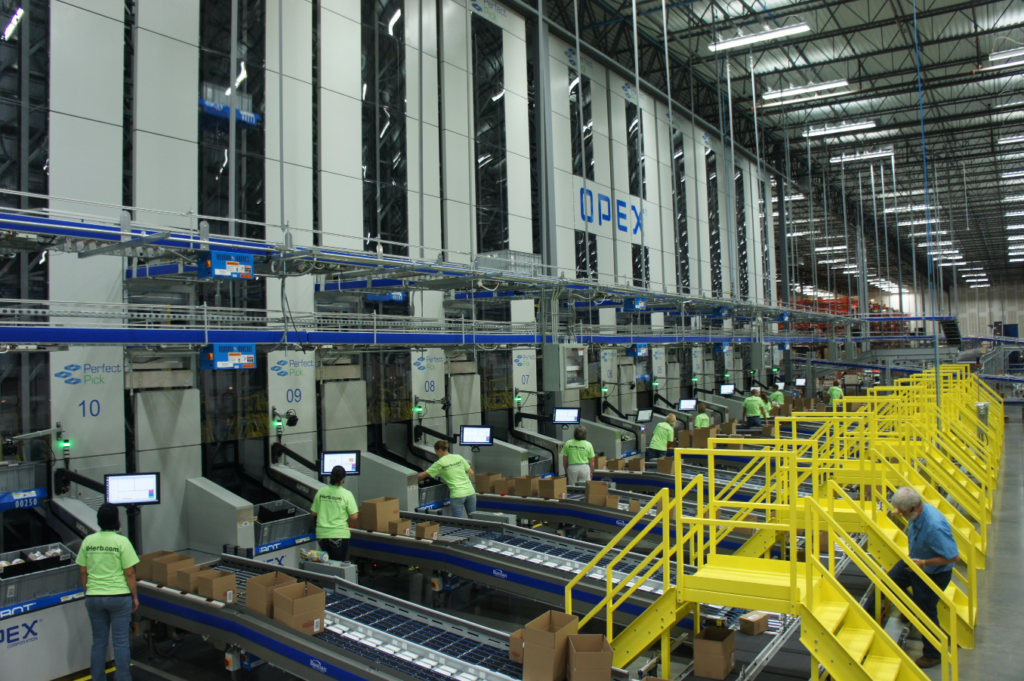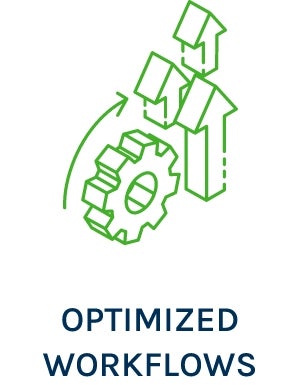60-Second Summary
With global supply chains still facing constant challenges, organizations worldwide are struggling with supply shortages, inventory overflow, frequent delays, understaffing, higher transportation costs, rising costs from inflation, and fluctuating consumer demand. These challenges are a result of supply chain vulnerabilities exposed by the pandemic in 2020 and other significant global events. In this blog post, we’ll cover five methods you can use to improve supply chain resilience for your organization, including streamlining inventory management, optimizing warehouse operations, improving order fulfillment and returns processing, diversifying your supply chain, and focusing on sustainability.

1. Streamline Inventory Management
As a result of post-pandemic market fluctuations and supply chain constraints, companies have been struggling with balancing inventory levels to meet drastically shifting consumer demand. The JIT (just-in-time) model, a popular method which involves moving material or goods just before being needed in the next phase of the supply chain to minimize costs, has become unreliable in adapting to demand shifts, leading companies to have not enough or too much inventory.
Low inventory levels can lead to lost profits from declining sales while overflowing inventory increases expenses for insurance, real estate, and material handling, commonly forcing businesses to sell off inventory at a decreased price, losing profits. Currently, US-based retailers sit on approximately $1.43 in inventory for each $1 made in sales. Effectively managing your inventory can help lower costs, improve the flow of inventory, and manage stock levels, helping to offset problems potentially caused by supply chain disruptions.
Implement a Dense Storage Automation System
One way to effectively manage inventory is to implement an automation system in your warehouse or distribution center. A dense automated storage and retrieval system (AS/RS) or goods-to-person (G2P) system can hold more inventory by utilizing vertical real estate space to free-up valuable floor space used for other operations. This reduces the need for additional real estate and lowers costs for material handling and overhead resulting from inventory overflow. These systems also provide additional space to keep backup or buffer stock without impeding other warehouse operations.
Dense storage AS/RS and G2P systems provide many benefits, including keeping inventory secure and protected to minimize shrink while providing employees with easy access to inventory for fast order fulfillment or store replenishment. Implementing these automation systems can provide a fast ROI, but not without investing significant amounts of time and capital first.
Utilize Intelligent Inventory Management Software
An effective way to manage inventory that’s becoming more popular with organizations and supply chains globally is inventory management software. Inventory management software can be used not only to track current inventory and stock levels, but also to manage suppliers and forecast supply needs using previous sales data as a baseline and taking predicted trends into consideration.
Other than inventory management software, you may consider implementing warehouse management software (WMS) to help with managing inventory storage and item picking in your warehouse. A WMS may be able to integrate with any automation equipment you choose to use, helping to connect and improve warehouse activities.
“In the next three years, it’s expected that 60% of companies expect to invest in the conveyor systems and sortation systems to reinforce their supply chain.”
(Parcel, 2020)
2. Optimize Warehouse Operations
In addition to inventory management, optimizing your warehouse operations is one of the keys to helping your supply chain become more resilient. Improving the efficiency of warehouse activities and streamlining workflows helps lower overhead costs, including labor, utility, and resource expenses, which can offset rising shipping and transportation costs that are still higher than pre-pandemic levels over two years ago.
There are many ways to optimize your warehouse operations – introducing new software or automation technology are just a couple ways you can improve your supply chain. In the next three years, it’s expected that 60% of companies expect to invest in conveyor systems and sortation systems to reinforce their supply chain.
Lower Costs by Implementing Automation
One way to lower warehouse costs and improve operational efficiency is to implement some degree of automation in your warehouse or distribution center, which can be anything from adopting new software, conveyors, automated sorting systems, or AS/RS and G2P systems. Implementing a form of automation reduces heavy reliance on manual labor to fulfill orders, replenish inventory, and process returns. This helps operations become more independent and resilient to the effects of high labor turnover or labor shortages, even reducing the amount of temporary labor that operations may need during peak seasons.
Automating activities like inventory handling, order fulfillment, and returns processing can significantly reduce labor costs and time, helping the supply chain be more efficient and productive. Implementing automation also doesn’t mean replacing people entirely – you’ll still need employees for your warehouse. But when implemented correctly in a manner that takes people into consideration, automation can make operations and repetitive tasks easier for warehouse employees by reducing injury rates and improving safety
3. Improve Order Fulfillment and Returns Processing
With growing inflation and rising global tensions, ecommerce and retail sales are beginning to decline after soaring during the recent pandemic. In the first quarter of 2022, ecommerce sales continued to grow at a rate of 2.4% compared to the last quarter of 2021, but when factoring in inflation, ecommerce sales actually declined by 0.7%, flattening the ecommerce growth curve. But that doesn’t mean people aren’t still buying from online and from brick-and-mortar stores.
Streamlining order fulfillment with some degree of automation can still provide significant benefits with a fast ROI while helping to ease constraints and delays caused by supply chain disruptions. Improving the returns process can even help keep inventory moving through the supply chain and make items available again for sale, if possible, to recover income.
Leverage Effective Order Fulfillment Software
Incorporating order fulfillment software, commonly used in conjunction with an automation system, into the fulfillment process significantly improves order accuracy and fulfillment speed by helping to guide employees on picking and packing activities.
When paired with an AS/RS or G2P system, order fulfillment software creates a simple and unified operator experience and order fulfillment or returns processing workflow that helps to reduce costs and maximize output without adding more labor.
4. Diversify Supply Chains and Supplies
Diversifying your supply chain and adding more suppliers in different locations is one of the strongest ways to improve your supply chain resiliency, providing backup sources in case another vendor is unable to provide supplies. Lack of supply chain diversification can cause delays, back orders, unhappy customers, and revenue decline that ultimately hurts profits. In fact, studies show that supply chain disruptions cause significant losses in terms of reputation (54%), logistics (54%), and finances (64%) due to higher transportation costs, unsatisfied customers, inaccurate order fulfillment, and shortages. However, diversifying an established supply chain can be difficult, requiring extensive planning beforehand. Software for supply chains can assist in unifying multiple sources into one supply chain and optimizing performance to improve logistics.5. Incorporate Sustainability Practices
While focusing on immediate solutions to manage supply chain disruptions are a top priority for many organizations, another option to help with supply chain resiliency is to incorporate more sustainable practices. There’s increasing pressure from both potential customers and legislation to commit to sustainability, especially in supply chains.
Even on a high-level, sustainable practices can help lower costs and offset rising expenses from increased shipping and transportation rates by conserving resources and energy use. Organizations can achieve significant cost savings by improving the efficiency or buildings, vehicles, and machinery. Implementing new software or automation systems to streamline operations can reduce labor and overhead needs, while still being energy efficient to meet sustainability goals and lower costs.
Conclusion
With the supply chain crisis likely to last well into 2023 and beyond, there’s no end in sight to supply chain disruptions for organizations across the globe. Currently, only 22% of organizations have a proactive supply chain network to help with disruptions, leaving other organizations vulnerable to shortages, delays, and lost revenue. It’s crucial for companies to take a proactive approach to improving supply chain resilience to ease disruptions and prepare for future challenges that may be detrimental to businesses.
Other Resources You Might Find Helpful
Case Study
How Ingram Micro Increased Throughput in a Small Footprint
15 min read
White Paper
Scalable Storage and Retrieval to Match Warehouse Progressive Demands
15 min read
Insight
Optimizing Inventory Storage with a Dense ASRS
15 min read
Last Item
Last item text for final slider item on this page
15 min read
NEXT LEVEL AUTOMATION
Unlock Operational Efficiency with OPEX
OPEX is powering the future of automation. Contact us to learn more about how our vertically integrated automated solutions can help take your business to new heights.



